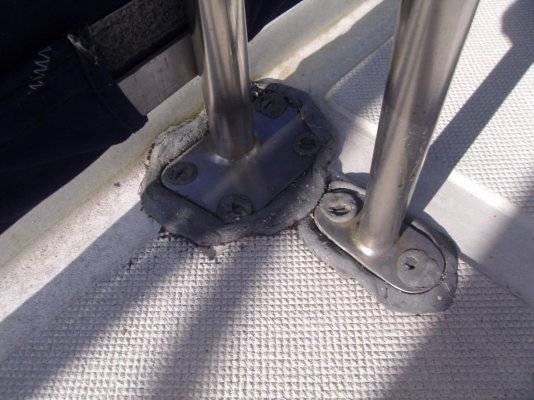healhustler
Guru
- Joined
- Oct 2, 2009
- Messages
- 5,198
- Location
- USA
- Vessel Name
- Bucky
- Vessel Make
- Krogen Manatee 36 North Sea
I've been removing and re-bedding stanchions for some time now, but today when I was speaking to a private contractor about sealing and painting my upper deck, he said that when finding rot in the core of decks below the stanchions, one shouldn't fill the area with epoxy and re-drill the holes because the epoxy is too rigid and will eventually crack with force on the stanchion or cleat, eventually leading back to the same water intrusion that causes the problem to begin with. He said it should be bunged with teak or some other moisture resistant wood, using epoxy to adhere the wood, then re-drilled and bolted through the bung instead of the epoxy. Anybody ever hear of this process?

 I will be using it for my upcoming projects.
I will be using it for my upcoming projects. 